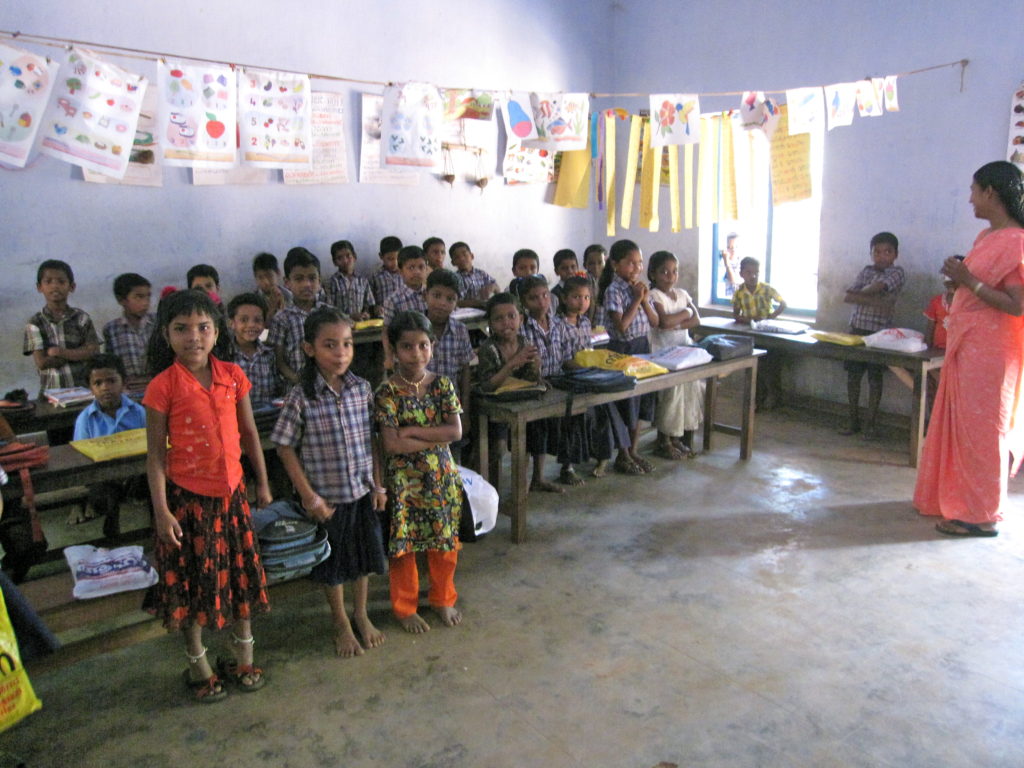‘Enter’ Rural India
By
S. Ramadorai
| 26 Sep 2020
By S. Ramadorai | 26 Sep 2020

India has a positive demographic opportunity, with over 60 percent of its population in the working-age group. Needless to say, education and skill development are the tools required to realize this demographic potential. In this backdrop, the formulation of the National Education Policy 2020 that replaced the 34-year-old National Policy on Education (NPE), 1986, assumes great significance for the future of our country.
I see ‘NEP 2020’ as a bold effort to provide the framework for sweeping changes in the whole education system, keeping in mind the need for access, equity, excellence and employment. I am glad that many of the recommendations made by me have found mention in the policy document as it has placed greater importance on vocational education and has proposed to embrace the usage of technology in the field of education.
Though NEP 2020 has been hailed as a transformative document, the real success lies in its implementation, particularly in the rural areas, where a host of problems relating to infrastructure and availability of quality teachers need to be addressed on priority to realize the goals and aspirations of the policy in its true letter and spirit.
Number of schools:
The network of anganwadis and schools have grown over the years due to the
Government schemes such as, Integrated Child Development Services (ICDS), Sarva Shiksha Abhiyan (SSA), Rashtriya Madhyamik Shiksha Abhiyan (RMSA) and later the Samagra Shiksha Abhiyan which has led to a significant increase in Gross Enrolment Ratio (GER) at all levels.
However, as per the data collected by the Ministry of Rural Development under the mission Antyodaya, over 14 percent villages in India do not have schools and around 47 per cent villages have schools only up to the primary level.
Given that the NEP 2020 has set a goal to achieve 100% GER in preschool to
secondary level by 2030, we will have to invest heavily in setting up adequate number of schools to accommodate all the students.
Infrastructure:
Education infrastructure, such as buildings, classrooms, playgrounds, libraries,
laboratories, and equipment are crucial elements of the learning environment in schools and universities. While a large number of schools lack the above infrastructure, quite a good number of them even fail to provide basic facilities such as drinking water, hygiene, cleanliness, toilets and power.
For instance, as per the District Information System for Education (DISE) data, only 53% of total government schools, which form majority of schools in rural India, have electricity connection.
Trained teaching staff:
As per Unified District Information System of Education (UDISE), 2016-17, there were nearly 1 lakh single-teacher Government schools at both, elementary level and secondary level and the situation has not changed much on the ground since then.
In addition to shortage of teachers and vacant posts in Government schools, the below-par competencies and rampant absenteeism among teachers are some of the reasons for poor quality education in rural areas.
Digital Divide:
Incidentally, NEP 2020 was adopted when the country is facing an unprecedented crisis due to Covid- 19 pandemic. The pandemic has affected education of over 350 million students across the country due to closures of schools and colleges. The digital divide between the urban and rural areas was evident as schools couldn’t move over to the virtual medium for teaching and learning activities due to lack of internet and smart devices with students or their family members. It is important to note that while 66% of India’s population lives in villages, only a little over 15% of rural households have access to internet services, according to the 2017-’18 National Sample Survey report on education.
Also, in the post Covid era, digital infrastructure in the schools needs to be ramped up, in the light of UDISE (Unified District Information on School Education, Department of School Education, Government of India) data that shows only 9.85% of government schools have a functional computer and 4.09% have an internet connection. This itself puts into question the overwhelming reliance on online education in NEP 2020.
In the past decade, Indian education system has been experimenting with online
teaching to reach a wider population with innovative, diverse courses and quality teaching. The Swayam and DIKSHA (Digital Infrastructure for Knowledge Sharing) platforms of the UGC, the ‘Bharat Padhe’ Online initiative of the Ministry and the recently launched PMeVidya – a multimode digital online learning education platform, will give the much-needed springboard for India to foray in to online learning mode in a big way, provided the digital infrastructure issues are addressed on priority.
The time to press ‘ENTER’ is ‘now’ to ensure equitable access to education. It is heartening to see that the Government of India seems to be working on Digital connectivity on a war footing and its resolve could be seen in the announcement made by the Prime Minister on the Independence day to provide optical fibre connectivity to all six lakh villages in 1000 days.
While the task in hand looks daunting, we should be optimistic and hope for the success of NEP 2020. What we need is – careful planning, right partnerships, aggressive implementation, a mechanism to monitor the progress and of course an increase in spending on education. The NEP’s target to increase public investment in the education sector to reach 6 per cent of Gross Domestic Product (GDP) from the current 3.1 percent is indeed a welcome step.
The implementation of the policy should not be seen as the Government’s sole responsibility rather, several players, including the private sector and the civil society must play a vital role and lend their expertise to achieve the goals set out by NEP 2020.
Players with complementary capabilities such as in Public – Private models along with People participation could help realize the goals envisioned in the NEP 2020.
S. Ramadorai is former CEO & MD, Tata Consultancy Services and Chairman, Council of Management, National Institute of Advanced Studies (NIAS)
Photo: Fabrice Florin from Mill Valley, USA / CC BY-SA
Also Read: Facebook, Twitter And Misplaced Indian Jingoism
Disclaimer: Views expressed in the blog are the author's own

Very insightful.
Thank you from Mr. S. Ramadorai.